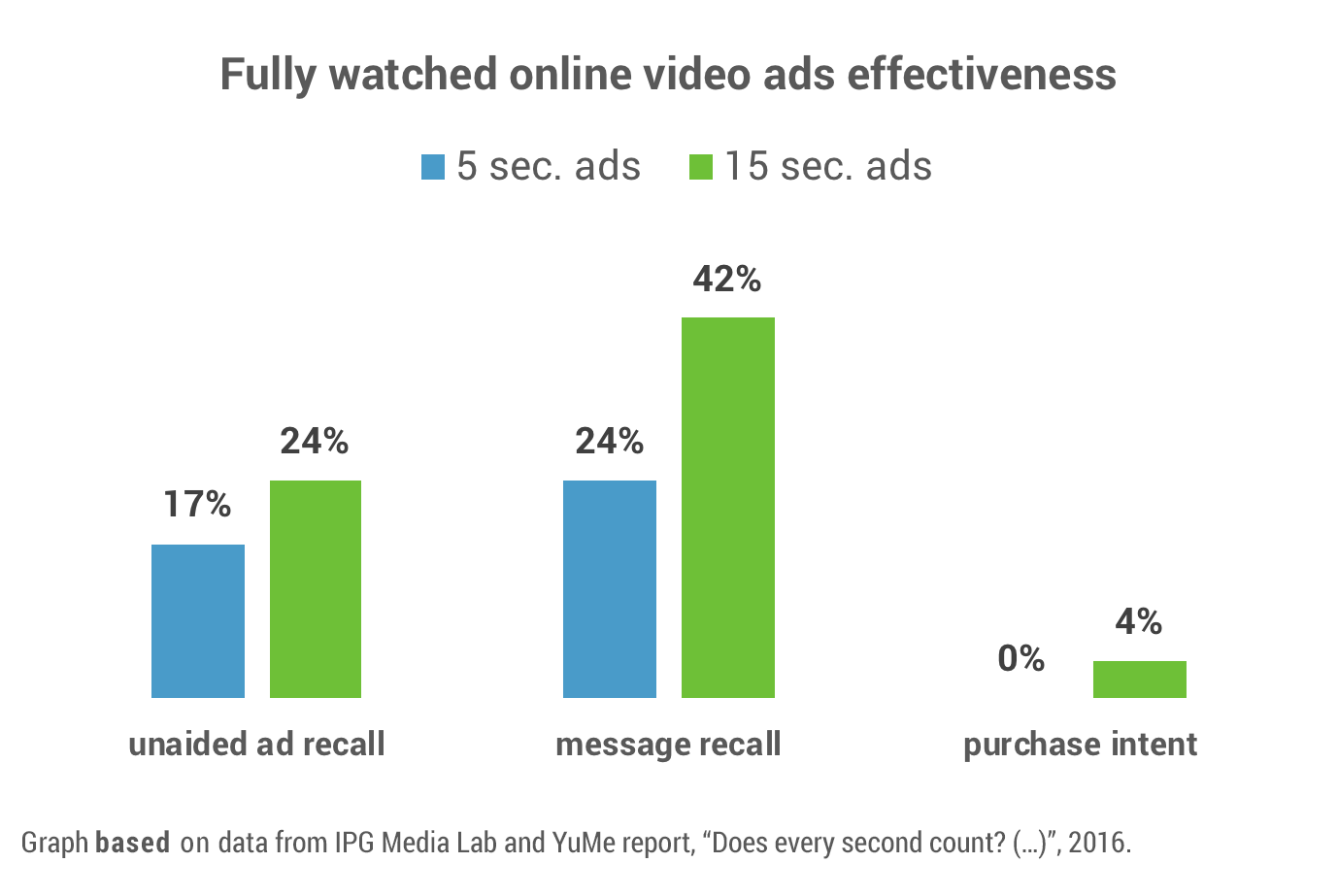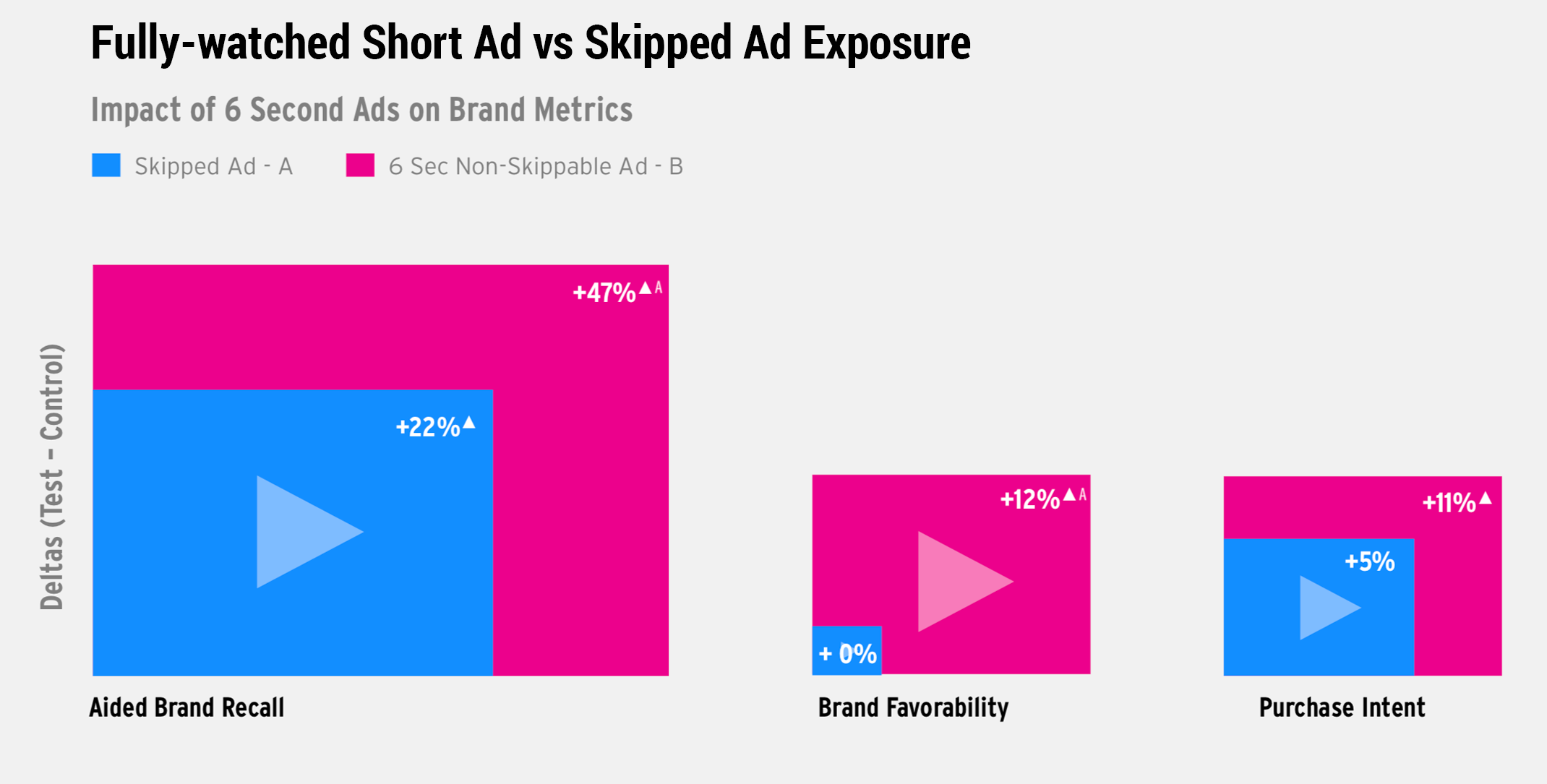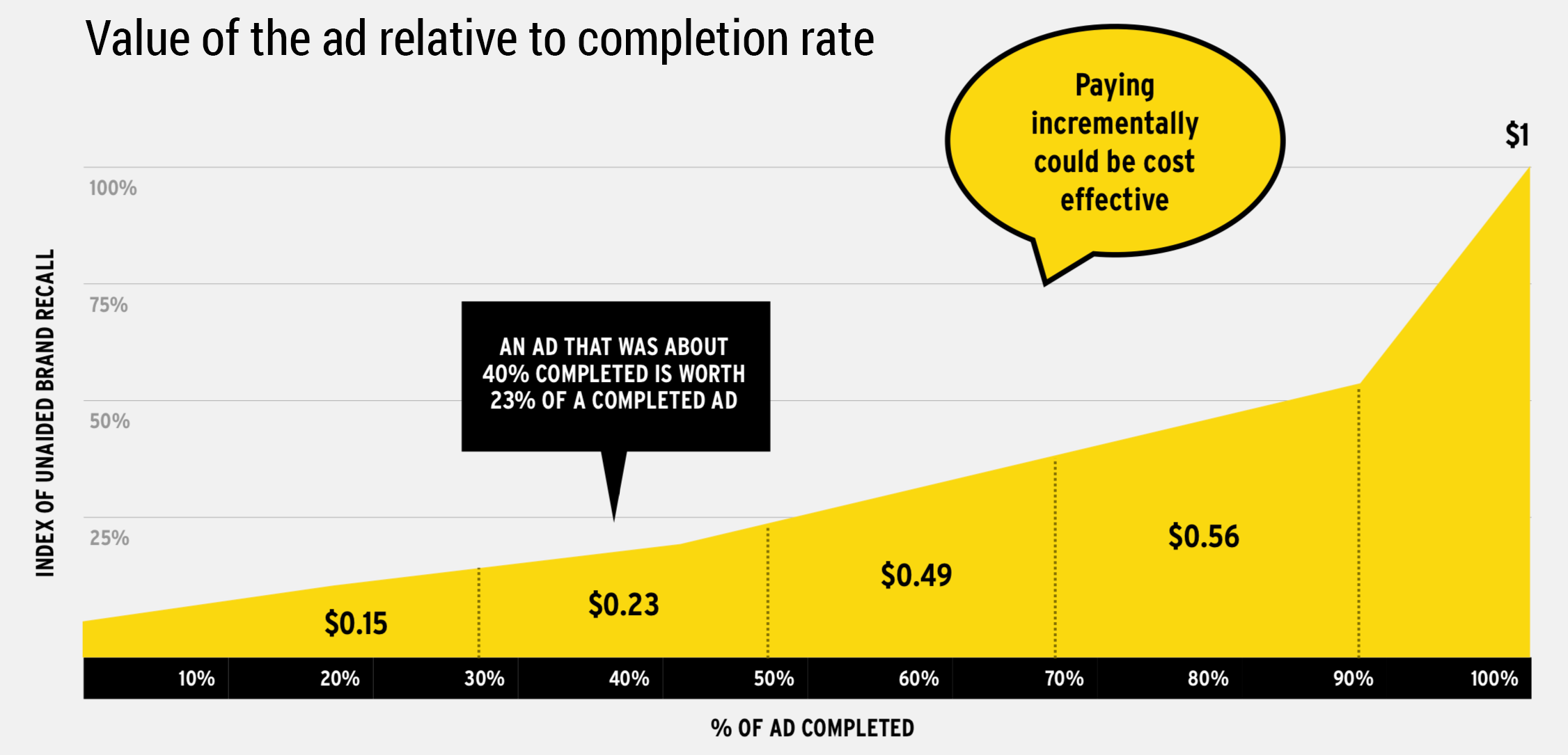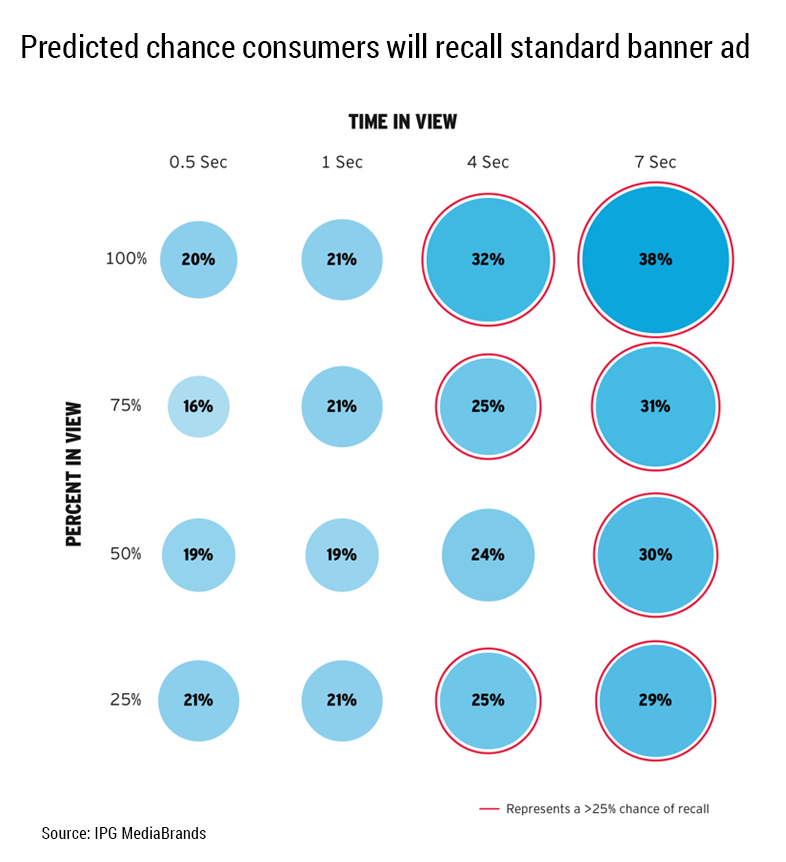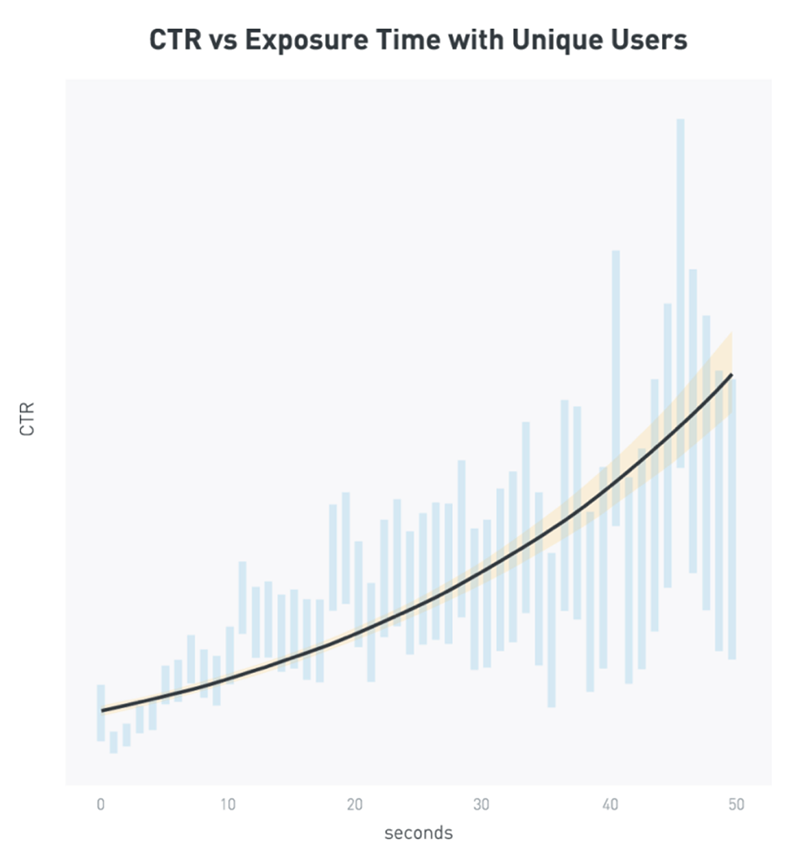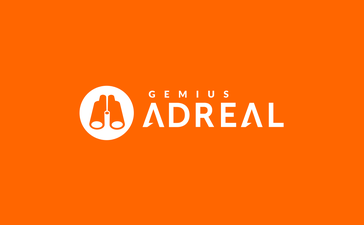
Is it really important how much time people spend on watching ads?
Some of those studies indicate that digital might have been underestimated in terms of influencing brand’s KPIs, as it can bring considerable results when exposure time is taken into account.
When speaking of the ad’s viewing time, two usual issues arise: firstly, what length of exposure is right to convey the message and secondly, how to increase the chance that an ad will actually be seen. Both of these topics, often considered a prerequisite for the advertising industry, are now being strongly influenced by the recent changes in media consumption and technology use patterns.
The present day relevance of the standard TV benchmark, being a 30s spot, should obviously be confronted with the rapidly changing habits of new generations of users, used to consuming content in a completely different way. Millennials and younger generations expect skippable or scrollable ads, if any at all. They also ought to be a group requiring a special focus as their most distinct features include self-claimed multitasking, short attention spans and “on-demand” attitude.
The duopoly of Facebook and YouTube quickly adapted to this new reality: they not only managed to make short time ads their primary advertising product, but more importantly, they began advocating in favour of this kind of format1. Similarly, marketers try to adjust to the newly shaped rules, often by designing more brief and condensed communication and expecting to pay solely for the content that was actually seen by the target audience However, as Marc Pritchard, Chief Brand Officer at Procter and Gamble, underlined a year ago at DMEXCO conference, even if PandG designs their ads to work in 2 seconds and negotiates to pay only for the ads that people actually see, they expect the big players to come up with “the next generation of digital ads”2.
With this background in mind, let’s have a brief look at the selection of research results concerning ad exposure time.
Long ads perform better, short ones do well if on smartphone and targeted to Millennials
The study “Does Every Second Count?” by YuMe and IPG Media Lab3 focused on verifying how effective are “micro-ads” (5s) as compared to the longer formats. The results show that the effectiveness of fully-watched ads increases with their length, but short formats can already perform quite well depending on the metric analysed.
It is worth mentioning that in this study the impact on purchase intent starts with a 15s spot and rises with subsequent seconds (8 per cent for 30s, and 12 per cent for 45/60s), unless on a smartphone, where 5 s spots achieved the same score as 15s ads. Short video ads also worked better if targeted to Millennials rather than older generations and if used for well-known brands, while conveying a message for a new brand clearly required use of a longer format.
Even skipped video ads already have an impact
A different study of Magna and IPG Media Lab4 addressed yet another more salient issue of time in-view and video ad exposure: skipping the ads. The study results indicate that people are less likely to skip shorter ads, but, what is more important, even skipped ads can significantly impact brand recall and consumers’ purchase intent, though, naturally, watching a full ad provides even more value.
Source: „Turbo-charging your skippable pre-roll campaign”, Magna, IPG Media Lab, 2017.
Nevertheless, when seeking optimization, a fully-watched short video is still a much better choice than risking a longer ad that will most probably be skipped by the user, as brand recall and persuasion metrics are higher in the former case.Display ads performance also depends on time in-view
Just like in case of video ads, with display ads there is also a number of studies suggesting that ad recall or even CTR increases with time in-view.
For instance, another study by IPG Media Lab and partners5 , focusing on the viewability standard, showed that ad recall is related not only to the number of pixels in-view, but grows even more with time in-view. Authors comment that “time-in view is responsible for most of the variance in ad effectiveness metrics. It is a much better predictor of whether or not a consumer will be able to remember the ad compared to what percent of the ad was in view. Lastly, when we tracked consumer attention using eye tracking data, consumers’ attention increased only with the time the ad was in view – not the percent visible.”6
Source: „Putting science behind the standards”, IPG Media Lab and partners, 2016.
Last, but not least, the study from the BannerConnect7 collected data from half a billion impressions in H1 2015, from different brands in the Netherlands to investigate exposure time correlation with typical performance metrics like clicks, cost, and conversions. Authors claim that in case of unique contacts: “(…) the CTR increases by 30 per cent during the first 10 seconds, and this rises to over 200 per cent at 30 seconds exposure time. There is also a clear relationship between exposure time and CPA, with CPA being positively influenced by an extended exposure time.”
Source:
1Both YouTube and Facebook published a variety of articles promoting short videos, for instance:
Unlock new forms of video storytelling with 6-second YouTube bumper ads,
4 best practices for building impactful YouTube bumper ads,
The Value of Video for Brands,
Capturing Attention in Feed: The Science Behind Effective Video Creative.
2Marc Pritchard (PandG), September 2017, watch video or read a summary article.
3„Does every second count? Understanding new video ad lengths”, IPG Media Lab and YuMe, 2016.
4„Turbo-charging your skippable pre-roll campaign”, Magna, IPG Media Lab, 2017.
5„Putting science behind the standards”, IPG Media Lab, Integral Ad Science and Cadreon, 2016.
6„Putting science behind the standards ”, white paper, IPG Media Lab, Integral Ad Science and Cadreon, 2016.
7“Exposure Time: A New Standard for Measuring Digital Effectiveness?”, BannerConnect, 2016.
